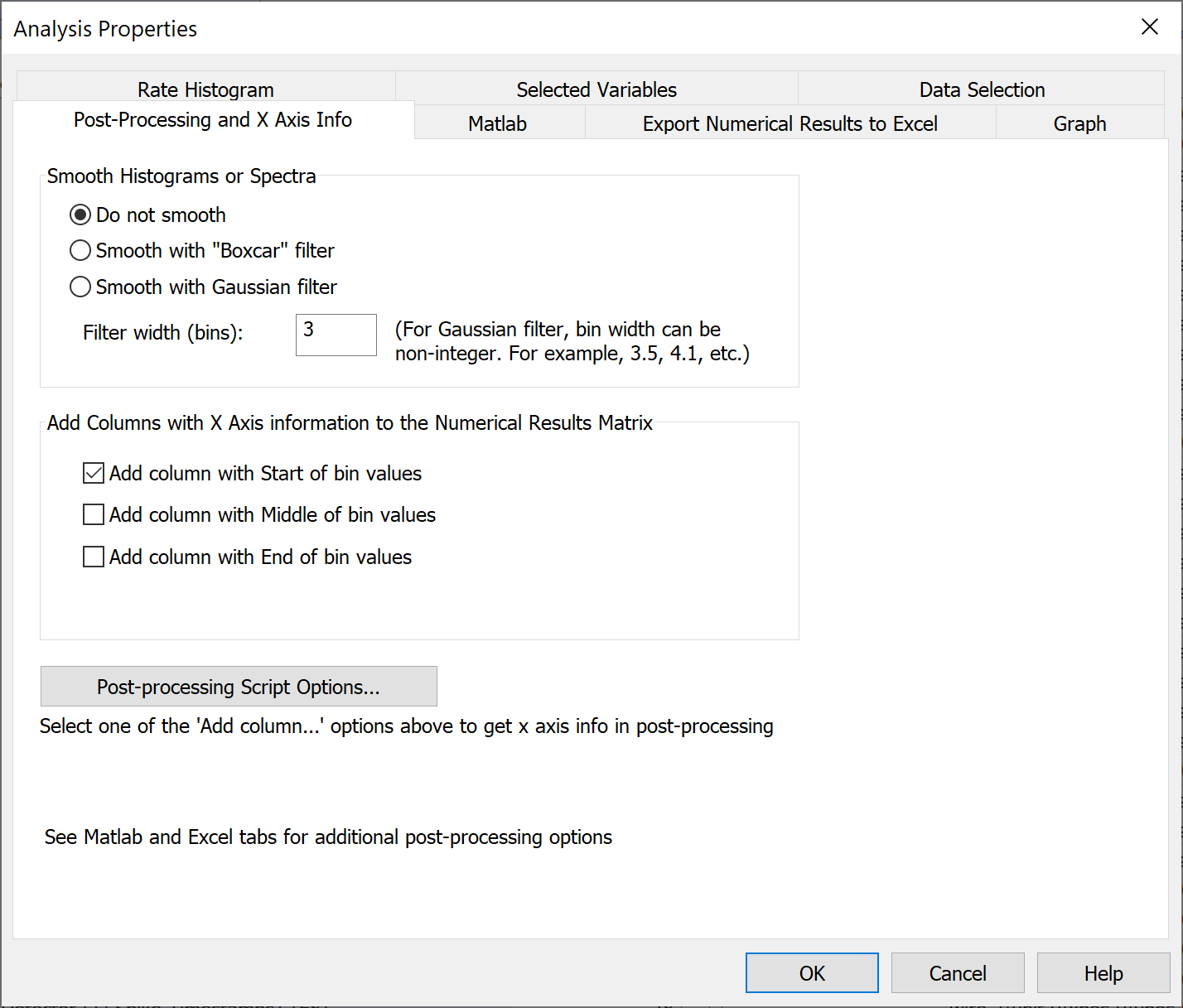Post-Processing Options
For the histogram-style analyses, NeuroExplorer has an optional Post-processing analysis step. You can specify post-processing options using Post-Processing and X Axis Info tab in the Analysis Parameters dialog.

You can smooth the resulting histogram with Gaussian or Boxcar filters.
The boxcar filter is a filter with equal coefficients. If f[i] is i-th filter coefficient and w is the filter width, then
f[i] = 1.0/w for all i
Thus for the filter of width 3, the boxcar filter is
f[-1] = 0.33333, f[0] = 0.33333, f[1] = 0.33333.
and the smoothed histogram sh[i] is calculated as
sh[i] = f[-1]*h[i-1] + f[0]*h[i] + f[1]*h[i+1]
where h[i] is the original histogram.
The boxcar filter needs to include the same number of histogram values before and after the current value.
This means that the number of coefficients of the filter cannot be even.
If the filter width w is specified as an even number, the actual filter width will be w+1.
The Gaussian filter is calculated using the following formula:
f[i] = exp(-i*i/sigma)/norm, i from -2*d to 2*d
where
d = ( (int)w + 1 )/2
sigma = -w * w * 0.25 / log(0.5)
norm = sum of exp( -i * i / sigma), i from -2*d to 2*d
The parameters of the filter are such that the width of the Gaussian curve at half the height equals to the specified filter width. Please note that for the Gaussian filter, width of the filter (w) can be a non-integer. For example, w can be 3.5.
See Matlab Options and Excel Options for more information on NeuroExplorer post-processing capabilities.